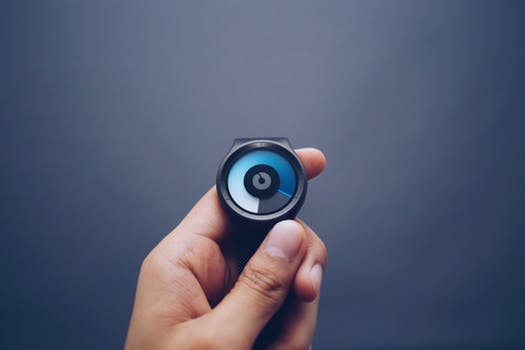TheDeveloperBlog.com
C-Sharp | Java | Python | Swift | GO | WPF | Ruby | Scala | F# | JavaScript | SQL | PHP | Angular | HTML
Java Integer.MAX VALUE, MIN and SIZE
Examine the MIN_VALUE and MAX_VALUE final ints on Integer and other classes. Use loop boundaries.TYPE: This returns a class reference. This matches the shortened type, like int for Integer.
SIZE: This returns the numbers of bits in the type. There are 8 bits in a byte.
MIN_VALUE: This is the smallest value the numeric class can represent. All the types except Char have sign bits.
MAX_VALUE: This is the highest value possible in a type. For Double and Long, these are huge.
Java program that shows type information
public class Program {
public static void main(String[] args) {
// Display common numeric types.
System.out.println(Byte.TYPE);
System.out.println(Byte.SIZE);
System.out.println(Byte.MIN_VALUE);
System.out.println(Byte.MAX_VALUE);
System.out.println(Short.TYPE);
System.out.println(Short.SIZE);
System.out.println(Short.MIN_VALUE);
System.out.println(Short.MAX_VALUE);
System.out.println(Character.TYPE);
System.out.println(Character.SIZE);
System.out.println((int) Character.MIN_VALUE);
System.out.println((int) Character.MAX_VALUE);
System.out.println(Integer.TYPE);
System.out.println(Integer.SIZE);
System.out.println(Integer.MIN_VALUE);
System.out.println(Integer.MAX_VALUE);
System.out.println(Float.TYPE);
System.out.println(Float.SIZE);
System.out.println(Float.MIN_VALUE);
System.out.println(Float.MAX_VALUE);
System.out.println(Double.TYPE);
System.out.println(Double.SIZE);
System.out.println(Double.MIN_VALUE);
System.out.println(Double.MAX_VALUE);
System.out.println(Long.TYPE);
System.out.println(Long.SIZE);
System.out.println(Long.MIN_VALUE);
System.out.println(Long.MAX_VALUE);
}
}
Output
byte
8
-128
127
short
16
-32768
32767
char
16
0
65535
int
32
-2147483648
2147483647
float
32
1.4E-45
3.4028235E38
double
64
4.9E-324
1.7976931348623157E308
long
64
-9223372036854775808
9223372036854775807
And: To loop through the entire range of positive ints, we can use a for-loop and stop at MAX_VALUE.
Caution: We must use "less than" Integer.MAX_VALUE not <= because otherwise the loop index will overflow.
Java program that uses Integer.MAX_VALUE, loops
public class Program {
public static void main(String[] args) {
// Loop over all positive integers.
for (int value = 0; value < Integer.MAX_VALUE; value++) {
// ... Do something important.
}
// Loop over all positive integers in reverse.
for (int value = Integer.MAX_VALUE - 1; value >= 0; value--) {
// ... Do another important thing.
}
System.out.println("DONE");
}
}
Output
DONE
Java program that uses byte
public class Program {
public static void main(String[] args) {
byte value = 100;
System.out.println(value);
// Try to cast a large number to a byte.
// ... The result may be unexpected.
value = (byte) 9999;
System.out.println(value);
}
}
Output
100
15
Java program that uses short
public class Program {
public static void main(String[] args) {
// Use a short local variable type.
short number = 10;
System.out.println(number);
// Short has less range than int.
System.out.println(Short.MIN_VALUE);
System.out.println(Short.MAX_VALUE);
}
}
Output
10
-32768
32767
Java program that uses long
public class Program {
public static void main(String[] args) {
// This number is too long to be an int, but it fits in a long.
String value = "100000000000000000";
long result = Long.parseLong(value);
System.out.println(result);
}
}
Output
100000000000000000
Here: We see how the bits change in the numbers 0 through 9. ToBinaryString helps us visualize bitwise operations.
Java program that uses toBinaryString
public class Program {
public static void main(String[] args) {
// Convert 1 to 10 to binary Strings.
for (int i = 0; i < 10; i++) {
String result = Integer.toBinaryString(i);
System.out.println(result);
}
}
}
Output
0
1
10
11
100
101
110
111
1000
1001
Related Links:
- Java Continue Keyword
- Java Convert Char Array to String
- Java Combine Arrays
- Java Console Examples
- Java Web Services Tutorial
- Java Odd and Even Numbers: Modulo Division
- Java IO
- Java 9 Features
- Java 8 Features
- Java String
- Java Regex | Regular Expression
- Java Filename With Date Example (Format String)
- Java Applet Tutorial
- Java Files.Copy: Copy File
- Java filter Example: findFirst, IntStream
- Java Final and final static Constants
- Java Super: Parent Class
- Java Date and Time
- Java do while loop
- Java Break
- Java Continue
- Java Comments
- Java Splitter Examples: split, splitToList
- Java Math.sqrt Method: java.lang.Math.sqrt
- Java Reflection
- Java Convert String to int
- JDBC Tutorial | What is Java Database Connectivity(JDBC)
- Java main() method
- Java HashMap Examples
- Java HashSet Examples
- Java Arrays.binarySearch
- Java Integer.bitCount and toBinaryString
- Java Overload Method Example
- Java First Words in String
- Java Convert ArrayList to String
- Java Convert boolean to int (Ternary Method)
- Java regionMatches Example and Performance
- Java ArrayDeque Examples
- Java ArrayList add and addAll (Insert Elements)
- Java ArrayList Clear
- Java ArrayList int, Integer Example
- Java ArrayList Examples
- Java Boolean Examples
- Java break Statement
- Java Newline Examples: System.lineSeparator
- Java Stream: Arrays.stream and ArrayList stream
- Java charAt Examples (String For Loop)
- Java Programs | Java Programming Examples
- Java OOPs Concepts
- Java Naming Conventions
- Java Constructor
- Java Class Example
- Java indexOf Examples
- Java Collections.addAll: Add Array to ArrayList
- Java Compound Interest
- Java Int Array
- Java Interface Examples
- Java 2D Array Examples
- Java Remove HTML Tags
- Java Stack Examples: java.util.Stack
- Java Enum Examples
- Java EnumMap Examples
- Java StackOverflowError
- Java startsWith and endsWith Methods
- Java Initialize ArrayList
- Java Object Array Examples: For, Cast and getClass
- Java Objects, Objects.requireNonNull Example
- Java Optional Examples
- Java Static Initializer
- Java static Keyword
- Java Package: Import Keyword Example
- Java Do While Loop Examples
- Java Double Numbers: Double.BYTES and Double.SIZE
- Java Truncate Number: Cast Double to Int
- Java Padding: Pad Left and Right of Strings
- Java Anagram Example: HashMap and ArrayList
- Java Math.abs: Absolute Value
- Java Extends: Class Inheritance
- Java String Class
- Java String Switch Example: Switch Versus HashMap
- Java StringBuffer: append, Performance
- Java Array Examples
- Java Remove Duplicates From ArrayList
- Java if, else if, else Statements
- Java Math.ceil Method
- Java This Keyword
- Java PriorityQueue Example (add, peek and poll)
- Java Process.start EXE: ProcessBuilder Examples
- Java Palindrome Method
- Java parseInt: Convert String to Int
- Java toCharArray: Convert String to Array
- Java Caesar Cipher
- Java Array Length: Get Size of Array
- Java String Array Examples
- Java String compareTo, compareToIgnoreCase
- Java String Concat: Append and Combine Strings
- Java Cast and Convert Types
- Java Math.floor Method, floorDiv and floorMod
- Java Math Class: java.lang.Math
- Java While Loop Examples
- Java Reverse String
- Java Download Web Pages: URL and openStream
- Java Math.pow Method
- Java Math.round Method
- Java Right String Part
- Java MongoDB Example
- Java Substring Examples, subSequence
- Java Prime Number Method
- Java Sum Methods: IntStream and reduce
- Java switch Examples
- Java Convert HashMap to ArrayList
- Java Remove Duplicate Chars
- Java Constructor: Overloaded, Default, This Constructors
- Java String isEmpty Method (Null, Empty Strings)
- Java Regex Examples (Pattern.matches)
- Java ROT13 Method
- Java Random Number Examples
- Java Recursion Example: Count Change
- Java reflect: getDeclaredMethod, invoke
- Java Count Letter Frequencies
- Java ImmutableList Examples
- Java String equals, equalsIgnoreCase and contentEquals
- Java valueOf and copyValueOf String Examples
- Java Vector Examples
- Java Word Count Methods: Split and For Loop
- Java Tutorial | Learn Java Programming
- Java toLowerCase, toUpperCase Examples
- Java Ternary Operator
- Java Tree: HashMap and Strings Example
- Java TreeMap Examples
- Java while loop
- Java Convert String to Byte Array
- Java Join Strings: String.join Method
- Java Modulo Operator Examples
- Java Integer.MAX VALUE, MIN and SIZE
- Java Lambda Expressions
- Java lastIndexOf Examples
- Java Multiple Return Values
- Java String.format Examples: Numbers and Strings
- Java Joiner Examples: join
- Java Keywords
- Java Replace Strings: replaceFirst and replaceAll
- Java return Examples
- Java Multithreading Interview Questions (2021)
- Java Collections Interview Questions (2021)
- Java Shuffle Arrays (Fisher Yates)
- Top 30 Java Design Patterns Interview Questions (2021)
- Java ListMultimap Examples
- Java String Occurrence Method: While Loop Method
- Java StringBuilder capacity
- Java Math.max and Math.min
- Java Factory Design Pattern
- Java StringBuilder Examples
- Java Mail Tutorial
- Java Swing Tutorial
- Java AWT Tutorial
- Java Fibonacci Sequence Examples
- Java StringTokenizer Example
- Java Method Examples: Instance and Static
- Java String Between, Before, After
- Java BitSet Examples
- Java System.gc, Runtime.getRuntime and freeMemory
- Java Character Examples
- Java Char Lookup Table
- Java BufferedWriter Examples: Write Strings to Text File
- Java Abstract Class
- Java Hashtable
- Java Math class with Methods
- Java Whitespace Methods
- Java Data Types
- Java Trim String Examples (Trim Start, End)
- Java Exceptions: try, catch and finally
- Java vs C#
- Java Float Numbers
- Java Truncate String
- Java Variables
- Java For Loop Examples
- Java Uppercase First Letter
- Java Inner Class
- Java Networking
- Java Keywords
- Java If else
- Java Switch
- Loops in Java | Java For Loop
- Java File: BufferedReader and FileReader
- Java Random Lowercase Letter
- Java Calendar Examples: Date and DateFormat
- Java Case Keyword
- Java Char Array
- Java ASCII Table
- Java IntStream.Range Example (Get Range of Numbers)
- Java length Example: Get Character Count
- Java Line Count for File
- Java Sort Examples: Arrays.sort, Comparable
- Java LinkedHashMap Example
- Java Split Examples